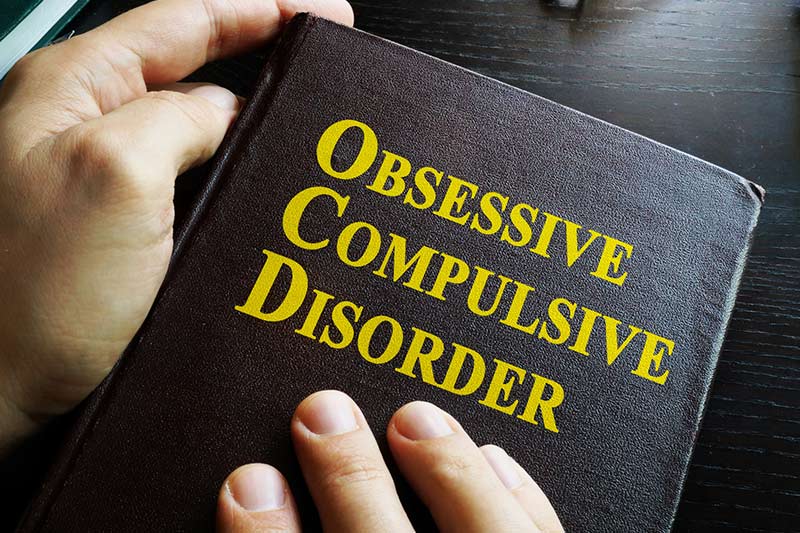Obsessive-Compulsive Disorder (OCD) is a mental health disorder characterized by recurrent, intrusive, and unwanted thoughts, images, or impulses (obsessions) that cause significant anxiety and distress. To alleviate this anxiety and distress, individuals with OCD engage in repetitive and compulsive behaviors (compulsions) or mental acts.
Compulsions may involve behaviors such as excessive hand washing, checking locks or appliances, or counting things. Mental acts may include repeating phrases silently, counting, or praying. The compulsions may provide temporary relief from the anxiety caused by the obsessions, but they often interfere with daily functioning and can consume a significant amount of time.
OCD can occur at any age and can be a chronic condition if left untreated. It can also co-occur with other mental health disorders, such as depression, anxiety, and eating disorders. OCD is treatable, and effective treatments typically involve a combination of medication and psychotherapy.
Types of Obsessive Compulsive Disorder
There are several types of Obsessive-Compulsive Disorder (OCD), which can vary based on the nature of the obsessions and compulsions. Some common types of OCD include:
- Contamination OCD: Individuals with contamination OCD may have a fear of germs, bacteria, or other contaminants, and may engage in excessive cleaning or hygiene rituals.
- Checking OCD: Checking OCD involves persistent and irrational fears of harm or danger, which may lead to compulsive checking behaviors such as repeatedly checking locks, appliances, or other items.
- Symmetry and Ordering OCD: Individuals with symmetry and ordering OCD may have a need for symmetry, order, and exactness, and may engage in repetitive and time-consuming rituals to achieve this.
- Hoarding OCD: Hoarding OCD involves the persistent difficulty in discarding or parting with possessions, regardless of their actual value, due to the fear of losing them or needing them in the future.
- Purely Obsessional OCD: Purely Obsessional OCD, also known as “Pure O,” involves intrusive, unwanted, and distressing thoughts without any observable compulsions.
- Harm OCD: Harm OCD involves obsessions about causing harm to oneself or others, which may lead to compulsions such as avoidance or reassurance-seeking behaviors.
It’s important to note that these types of OCD can overlap, and individuals with OCD may experience more than one type of obsession or compulsion. Effective treatment for OCD typically involves a combination of medication and psychotherapy, tailored to the individual’s specific symptoms and needs.
Symptoms of Obsessive Compulsive Disorder
Obsessive-Compulsive Disorder (OCD) is characterized by the presence of obsessions and compulsions, which can cause significant distress and interfere with daily life. Some common symptoms of OCD include:
- Obsessions: Intrusive, unwanted, and distressing thoughts, images, or impulses that cause significant anxiety and fear. These obsessions can be related to a wide range of topics, such as contamination, harm, symmetry, or morality.
- Compulsions: Repetitive behaviors or mental acts that individuals with OCD feel compelled to perform in response to their obsessions. Compulsions can take many forms, such as excessive cleaning, checking, counting, or repeating phrases.
- Anxiety: The presence of obsessions and compulsions can cause significant anxiety, fear, and distress.
- Time-consuming: OCD symptoms can be time-consuming, interfering with daily life, work, and social activities.
- Interference with daily life: OCD symptoms can interfere with daily life, causing significant distress and impairment in social, occupational, and other areas of functioning.
- Lack of control: Individuals with OCD may feel unable to control their obsessions and compulsions, despite recognizing that they are irrational or excessive.
- Avoidance: Individuals with OCD may avoid situations or triggers that cause their obsessions or compulsions, further limiting their daily activities and social interactions.
It’s important to note that OCD symptoms can vary widely from person to person and may change over time. Effective treatment for OCD typically involves a combination of medication and psychotherapy, tailored to the individual’s specific symptoms and needs.
Obsessive Compulsive Disorder Causes
The exact causes of Obsessive-Compulsive Disorder (OCD) are not fully understood, but research suggests that a combination of biological, genetic, environmental, and psychological factors may contribute to its development. Here are some possible causes of OCD:
- Genetics: There is evidence to suggest that OCD may run in families, indicating that genetics may play a role in its development.
- Brain function: Studies have shown that abnormalities in certain areas of the brain, such as the basal ganglia and the orbitofrontal cortex, may be associated with OCD.
- Environmental factors: Traumatic events, such as abuse or illness, can trigger the onset of OCD in some individuals.
- Infections: In some cases, infections such as strep throat can trigger the onset of OCD symptoms.
- Chemical imbalances: An imbalance in certain chemicals in the brain, such as serotonin, can contribute to the development of OCD.
- Personality factors: Some research suggests that individuals with certain personality traits, such as perfectionism or impulsivity, may be more prone to developing OCD.
Note that OCD is a complex disorder with many potential causes, and the exact factors that contribute to its development may vary from person to person. Effective treatment for OCD typically involves a combination of medication and psychotherapy, tailored to the individual’s specific symptoms and needs.
Treatment
Effective treatment for Obsessive-Compulsive Disorder (OCD) typically involves a combination of medication and psychotherapy. Here are some common approaches to treating OCD:
- Cognitive Behavioral Therapy (CBT): CBT is a type of psychotherapy that focuses on identifying and changing patterns of thoughts, feelings, and behaviors that contribute to OCD symptoms. Exposure and response prevention (ERP), a specific type of CBT, involves gradually exposing the individual to their obsessions and preventing them from engaging in compulsive behaviors.
- Medication: Certain medications, such as selective serotonin reuptake inhibitors (SSRIs), can be effective in reducing the symptoms of OCD. These medications work by increasing levels of serotonin in the brain.
- Deep Brain Stimulation: This is a surgical treatment in which electrodes are implant in specific areas of the brain and connected to a device that provides electrical stimulation to those areas. This treatment is typically reserved for individuals with severe OCD symptoms who have not responded to other treatments.
- Mindfulness-based therapies: Mindfulness-based therapies, such as Acceptance and Commitment Therapy (ACT), can be effective in helping individuals with OCD learn to accept their obsessions and compulsions without trying to control or suppress them.
- Self-help strategies: In addition to therapy and medication, individuals with OCD can benefit from self-help strategies such as stress reduction techniques, exercise, and lifestyle changes.
Note that the most effective treatment for OCD will depend on the individual’s specific symptoms and needs. Treatment for OCD can be a long-term process, but with the right support and treatment, many individuals are able to manage their symptoms and improve their quality of life.
Related



